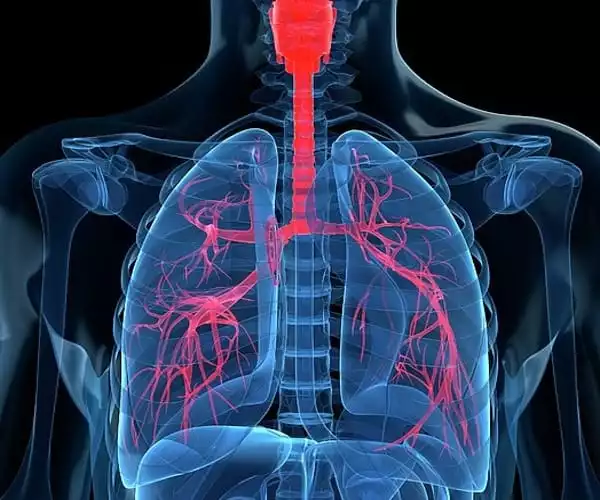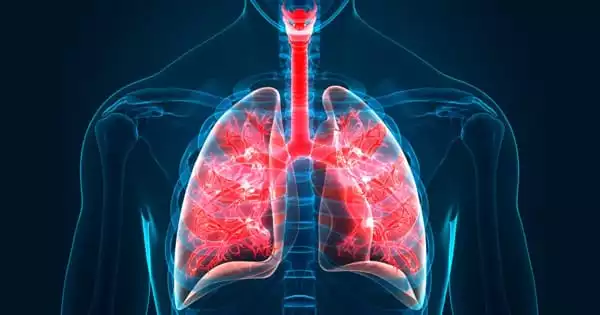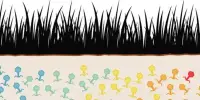The lung is a dormant tissue with a low reparative potential and a proclivity for scarring. When needed, the lung has a remarkable reparative capacity, and scarring or fibrosis after lung injury may occur occasionally in settings where this regenerative potential is hindered or constrained.
Researchers at the University of Pennsylvania’s Perelman School of Medicine found a novel type of cell that lives deep within human lungs and may play an important role in human lung disorders.
According to recent research, the respiratory system has a remarkable ability to adapt to harm and replace missing or damaged cells. The adult lung is extraordinarily quiet when unaltered, yet after shock or damage, progenitor populations can be triggered or surviving cells can re-enter the cell cycle. Cell-lineage tracing and transcriptome analysis, for example, have revealed unique and fascinating insights into how the lungs and trachea regenerate in response to injury, allowing the discovery of pathways crucial in lung development and regeneration.
The researchers investigated human lung tissue to discover the novel cells, which they call respiratory airway secretory cells, and published their findings today in Nature (RASCs). The cells line microscopic airway branches deep within the lungs, near the alveoli structures where oxygen and carbon dioxide are exchanged.
COPD is a terrible and common disease, but we still don’t know why or how certain patients develop it. Identifying new cell types, particularly new progenitor cells, that are harmed in COPD could significantly speed up the discovery of new treatments.
Maria Basil
The researchers demonstrated that RASCs contain stem-cell-like capabilities, allowing them to regenerate other cells required for regular alveolar function. They also discovered evidence that cigarette smoking and the widespread smoking-related sickness known as chronic obstructive pulmonary disease (COPD) can disrupt the regenerative capabilities of RASCs, implying that rectifying this disruption could be an effective treatment for COPD.
“COPD is a terrible and common disease, but we still don’t know why or how certain patients develop it. Identifying new cell types, particularly new progenitor cells, that are harmed in COPD could significantly speed up the discovery of new treatments” Maria Basil, MD, Ph.D., an instructor of Pulmonary Medicine, was the study’s first author.
COPD is characterized by gradual deterioration and loss of alveoli, which is aggravated by chronic inflammation. It is believed that 10% of individuals in some parts of the United States are affected by it, and that it kills around 3 million people worldwide each year. Patients are frequently offered steroid anti-inflammatory medicines and/or oxygen therapy, however these therapies can only slow the disease progression rather than stop or reverse it. Progress in understanding COPD has been slow, in part because mice, the usual lab animal, have lungs that lack critical properties of human lungs.

Morrisey and his colleagues discovered evidence of RASCs when evaluating gene-activity profiles of lung cells from healthy human donors in the latest study. They quickly discovered that RASCs, which do not exist in mouse lungs, are “secretory” cells that live near alveoli and create proteins required for the fluid lining of the airway.
“With studies like this, we’re starting to get a sense, at the cell-biology level, of what’s really going on in this very prevalent disease,” said senior author Edward Morrisey, PhD, the Robinette Foundation Professor of Medicine, a professor of Cell and Developmental Biology, and the director of Penn Medicine’s Penn-CHOP Lung Biology Institute.
Observations of gene-activity similarities between RASCs and AT2 cells, an important progenitor cell in alveoli, led the team to a further discovery: RASCs, in addition to their secretory function, serve as precursors for AT2 cells, regenerating them to maintain the AT2 population and keep alveoli healthy.
AT2 cells are known to become aberrant in COPD and other lung disorders, and the researchers discovered evidence that RASC deficiencies may be an upstream cause of these abnormalities. They discovered several AT2 cells that were changed in a way that suggested a defective RASC-to-AT2 transformation in lung tissue from persons with COPD as well as people without COPD who had a history of smoking.
More research is needed, but the findings indicate to the prospect of future COPD treatments that operate by restoring the normal RASC-to-AT2 differentiation process – or even by replenishing the normal RASC population in injured lungs, according to Morrisey.
















